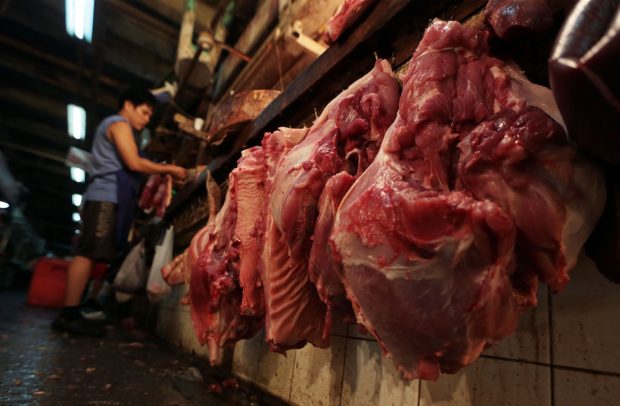Swine industry shows early signs of recovery from ASF
MANILA -The Department of Agriculture (DA) is projecting local pork output to surge, noting the strides made by the swine industry despite the lingering effects of the African swine fever (ASF) outbreak.
In an interview, Agriculture Undersecretary Mercedita Sombilla said the production has started picking up since last year and sustained its upward trajectory in the final quarter of 2022.
“I still have to do some analysis on where is this going but based on the first quarter growth rate of [4.1 percent]. We’re hoping that it will increase,” said Sombilla.
The livestock subsector registered a growth of 4.1 percent in the January to March period, a turnaround from a decrease of 1 percent in the same period a year ago, data from the Philippine Statistics Authority (PSA) showed.
READ: Local pork output to rise 5% this year
Hog production hit 437,990 metric tons (MT) during the reference period, as per PSA, against 416,720 MT in the previous year. Calabarzon emerged as the leading hog production, accounting for 14 percent of the total.
“It’s already positive and it continued in the first quarter. We expect it to be higher,” she added.
Mitigation measures
The agriculture official expressed hope the government’s existing programs such as the Integrated National Swine Production Initiatives for Recovery and Expansion (Inspire) program will lift the local swine output in the succeeding quarters.
READ: DA unveils ASF recovery program for swine industry
The Inspire program, introduced in February 2021, aims to fast-track calibrated repopulation and production expansion through farm clustering and consolidation.
“We hope that this continues and it goes back to the point that we will be able to get that production level that we had before,” Sombilla said.
The upbeat outlook provided by the DA runs contrary to the US Department of Agriculture’s (USDA) report which stated the ASF would still affect pork output this year.
READ: USDA: ASF not done hurting pork production in PH
The USDA’s Foreign Agricultural Service lowered the 2023 pork output forecast to 925,000 MT from 975,000 MT, pointing to the continued spread of animal disease to the Central and Western Visayas region, including Negros Occidental, Negros Oriental and Aklan.
Affected areas
It said both regions were among the major swine producers in the past year following the decimation of swine inventories elsewhere in the country.
The ASF remains active in 12 provinces in seven regions, based on the Bureau of Animal Industry’s tally as of June 14.
Sombilla said that, given the scenario, the DA does not see retail prices of pork products declining in the near term.
“It’s unlikely in the near future because the production of pork in the Philippines is still not at that level that we had before the pandemic, before the ASF, so it will still take time [to recover],” she added.
Pork liempo is sold from P290 to P390 per kilogram (kg), based on the DA’s price monitoring as of Thursday. This was unchanged from P390 per kg recorded a year prior.
Pork ham (kasim) is priced from P275 to P340 per kg from P330 per kg previously.

